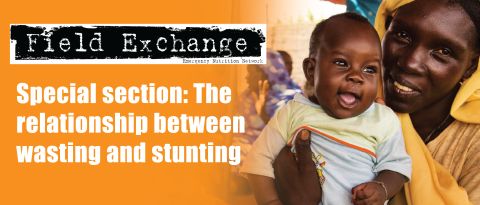Decentralising treatment in Mozambique: Findings from a pilot intervention on wasting
This is a summary of the following report: UNICEF (2019) Monitoring and evaluation of the community management of acute malnutrition pilot intervention in Mozambique.
Elisabete Catarino is a Nutrition Officer at UNICEF Mozambique
Kátia Mangujo is the Focal point of the Nutrition Rehabilitation Programme in the Nutrition Department at MoH Mozambique
Sonia Khan is a Nutrition Specialist at UNICEF Mozambique
Marla Amaro is the Head of the Nutrition Department at MoH Mozambique
Nutrition Situation in Mozambique
In Mozambique, approximately 6% of children under five years of age are affected by wasting (DHS, 2011). Wasting treatment services are available through the national health system, managed by the Nutrition Department under the Nutrition Rehabilitation Program (PRN), and have shown a high cure rate. However, outpatient wasting treatment has historically shown high defaulting rates (23% in 2015), especially in hard-to-reach or remote areas. Given these challenges, the Ministry of Health introduced a pilot intervention decentralising the treatment of child wasting from health facilities to community health workers (CHWs) in 2017. This pilot intervention started in three communities and subsequently expanded in 2019 to 26 more communities in 12 districts of three provinces in Mozambique: Nampula, Tete and Zambezia. The pilot areas were selected based on the following criteria: high prevalence of acute malnutrition/ wasting, the presence of a qualified CHW, a remote/hard to access health facility, and high defaulter rates from treatment.
Evaluation
An evaluation of the intervention was conducted to provide independent, critical findings on the quality, effectiveness, and efficiency of the pilot. To answer the evaluation questions, the review analysed processes and results for seven components (pilot planning and operationalisation, capacit-bBuilding, community engagement, performance and quality of services, logistics, monitoring and evaluation system, and the intervention scale-up). Data collection utilised qualitative and quantitative data, collected between February and October 2019.
The evaluation demonstrated that the trained CHWs were able to effectively treat uncomplicated cases of wasting, reaching a cure rate of 92% and a default rate of 4%, which positively impacted Mozambique’s traditional PRN model. Nevertheless, the evaluation of the capacity-building component showed that the interpretation of complex guidelines was a challenge for the CHWs, specifically the interpretation of weight-for-height z-scores. Whilst strong accountability mechanisms were put in place for stock management and periods of stock outs, difficulties in transportation and a lack of anthropometric material merit an increased focus on logistics and supply chains moving forward.
Despite the challenges, this intervention was found to deliver a positive impact on the autonomy and commitment of communities in resolving the problem of wasting locally, with a documented evolution in the quality of the service over time. As such, this approach to decentralised treatment should be considered for scale-up, particularly in high burden and remote areas. However, the scale-up will require a significant effort and commitment from local government, the United Nations, non-governmental organisations (NGOs) and other donors, to ensure medium- and long-term sustainability.
For more information, please contact Grace Funnell at gfunnell@unicef.org
References
DHS (2011) Moçambique inquérito demográfico e de saúde 2011. Instituto Nacional de Estatística.


